Discover When Leaves Change Color in Texas (and 7 Beautiful Places to See Them)
Although most people think of northern states when they think of fall colors, Texas experiences beautiful and cool autumn changes and weather. The amount of color changes though depends on the location. Texas is a very big state! The surface area of Texas is 268,596 square miles. You can see the most vibrant fall changes in northern and western Texas. Follow along to discover when leaves change color in Texas and 7 beautiful places to see fall foliage.
When do Leaves Change Color in Texas?
The exact time when leaves change color in Texas depends on the location. Each city and general area in this large southern state has a different expected peak. However, generally leaves start changing starting in mid to late October. Northern Texas near the border of Oklahoma can see fall foliage as early as the first week of October. Typically, the peak is in mid-November. By December, the leaves are almost entirely gone.
7 Beautiful Places to see Texas Fall Foliage
There are a lot more than just seven different places to see bright fall foliage in Texas. But if we were to try and list and describe the many places to admire the autumn leaves, the list would feel never-ending! Most of the spots on this list are state parks, all well-worth a visit!
1. Lost Maples State Natural Area
Starting our list is the Lost Maples State Natural Area in Bandera County and Real County. It’s an extremely popular spot to enjoy nature and watch as colorful red, yellow, and orange leaves fall. This lovely natural area has a surface area of 2,906 acres. Within this park are over 10 miles of hiking trails, 30 campsites with water and electricity, excellent fishing opportunities, and fantastic bird-watching spots.
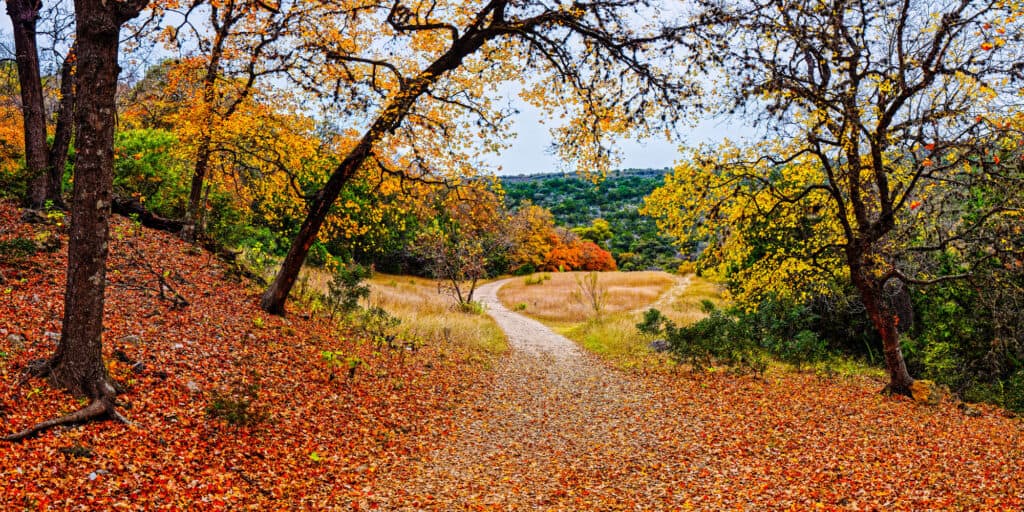
©Silvio Ligutti/Shutterstock.com
While here, you may even see the endangered golden-cheeked warbler and the black-capped vireo. There is even an official Birds of Lost Maples State Natural Area field guide. More common birds in the area include black vultures, northern bobwhites, red-tailed hawks, and great horned owls. Some trees you can see throughout the park changing colors and getting ready for winter are Ashe junipers, oak trees, and bigtooth maples.
2. Dallas Arboretum And Botanical Garden
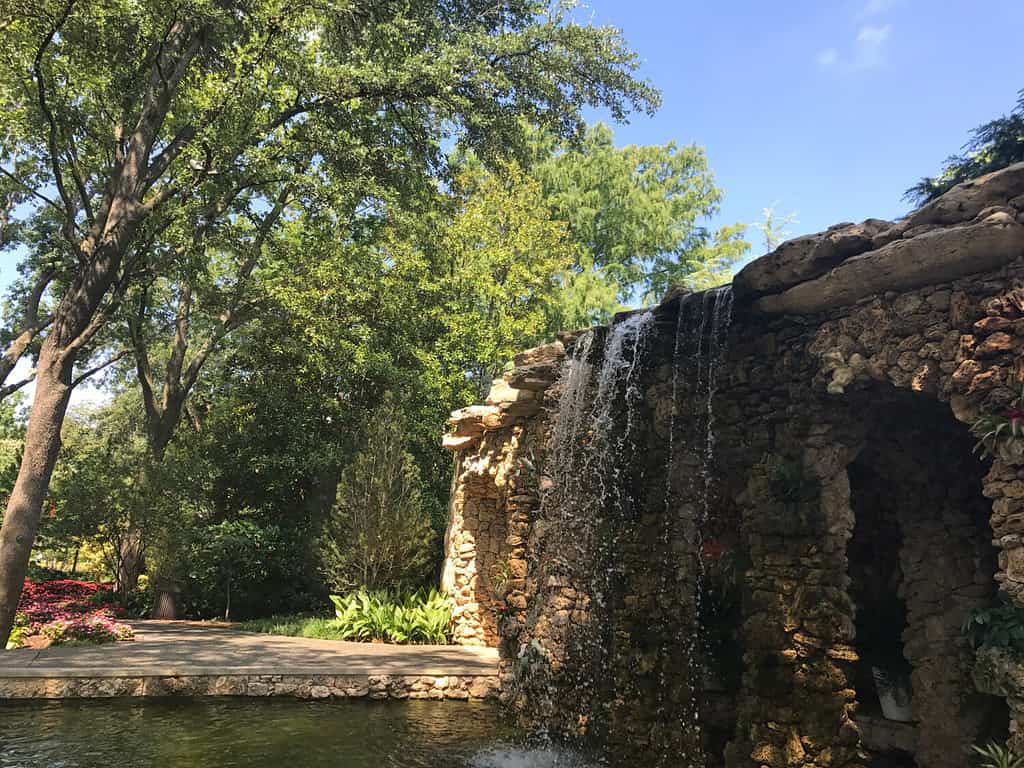
©Talia Alhammoud/Shutterstock.com
Who says you have to travel far from a major city like Dallas to view fall foliage? Another excellent place to view colorful leaves and enjoy fall weather is the Dallas Arboretum And Botanical Garden. Not only can you spend all day walking around and admiring the colorful trees, but also visit during an event day. The botanical garden hosts the Dallas Gourd Patch frequently in the fall.
Some gardens in the park include the Margaret Elisabeth Jonsson Color Garden, Nancy Rutchik Red Maple Rill, Boswell Family Garden, and Chandler Lindsley Shadow Garden. You also don’t have to wait for fall to visit these lovely botanical gardens. Another excellent time to view Dallas Arboretum And Botanical Garden is during spring when the trees flower and bloom. Summers are very popular, but also extremely hot!
3. Garner State Park
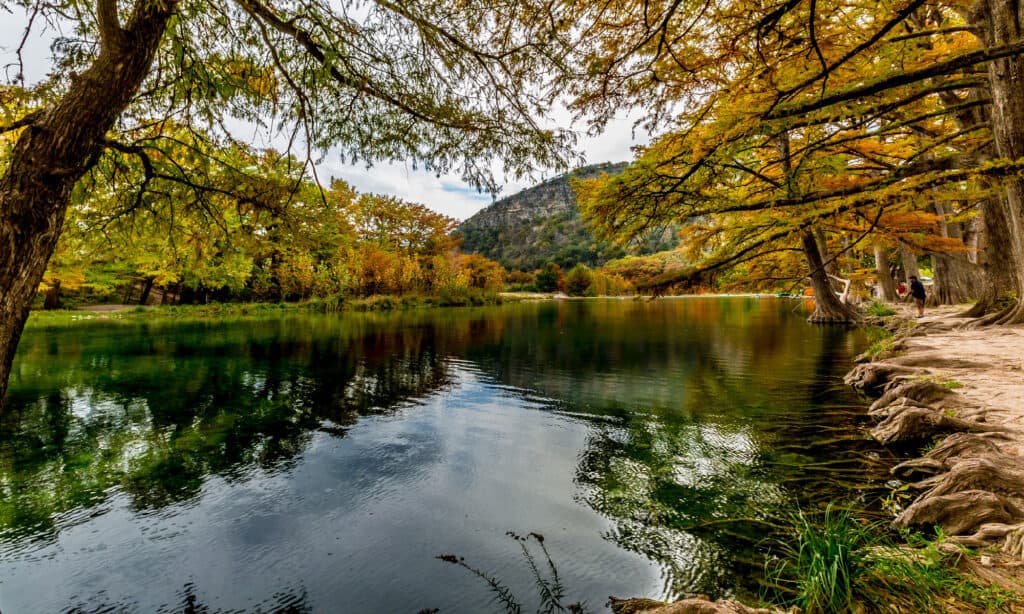
©iStock.com/Richard McMillin
The first state park to make our list is the very scenic Garner State Park. This gorgeous state park is in Uvalde County and is an excellent place to visit all year round, although particularly bright and beautiful in autumn. Garner State Park is absolutely breathtaking. It is one of the most popular state parks in the state welcoming between 300,000 to 550,000 visitors every year. The surface area of Garner State Park is 1,420 acres.
There is a lot to do and see here. In the summers, local Texans drive for hours to enjoy the cool and refreshing Frio River. Fun activities don’t end during the fall. The season of fall is an excellent time for overnight camping, hiking, and kayaking. The state park is dramatic and picture-worthy. Here you can find rocky canyons, crystal-clear streams, high mesas, and carved limestone cliffs.
4. Dinosaur Valley State Park
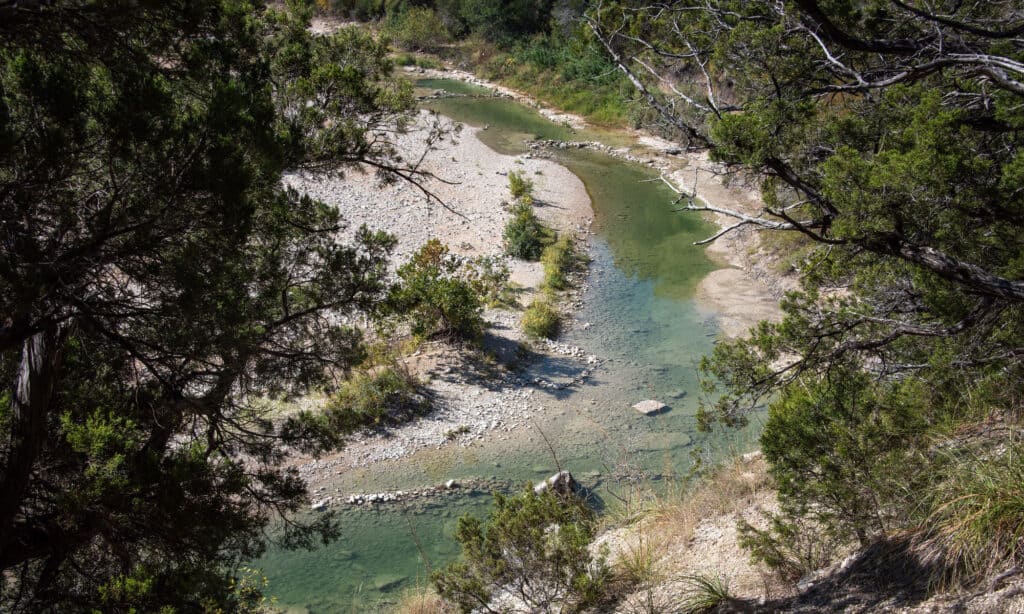
©Stanley Ford/Shutterstock.com
Have you ever heard of the Dinosaur Valley State Park? It’s one of the most unique places in Texas. As the name suggests, within the state park are numerous dinosaur tracks, particularly in the Paluxy River. The dinosaur tracks have been identified as Acrocanthosaurus and Sauroposeidon proteles tracks. Before visiting, check the state park’s page for updates as the tracks aren’t always visible. This incredible 1,524.72-acre state park is in Somervell County. The nearest city to this state park is Glen Rose, Texas.
Although known for having some of the most well-preserved dinosaur tracks in the country, it’s also a stunning and peaceful place to visit during fall. You can admire the cool river and the tracks with lovely yellow, red, and orange-leaved trees in the background.
Dinosaur Valley State Park offers campsites, about 20 miles of hiking trails, and amazing wildlife viewing spots. Animals you can find within the park are raccoons, beavers, rabbits, yellow perch, bluegill, fox squirrels, and alligator gars.
5. McKinney Falls State Park
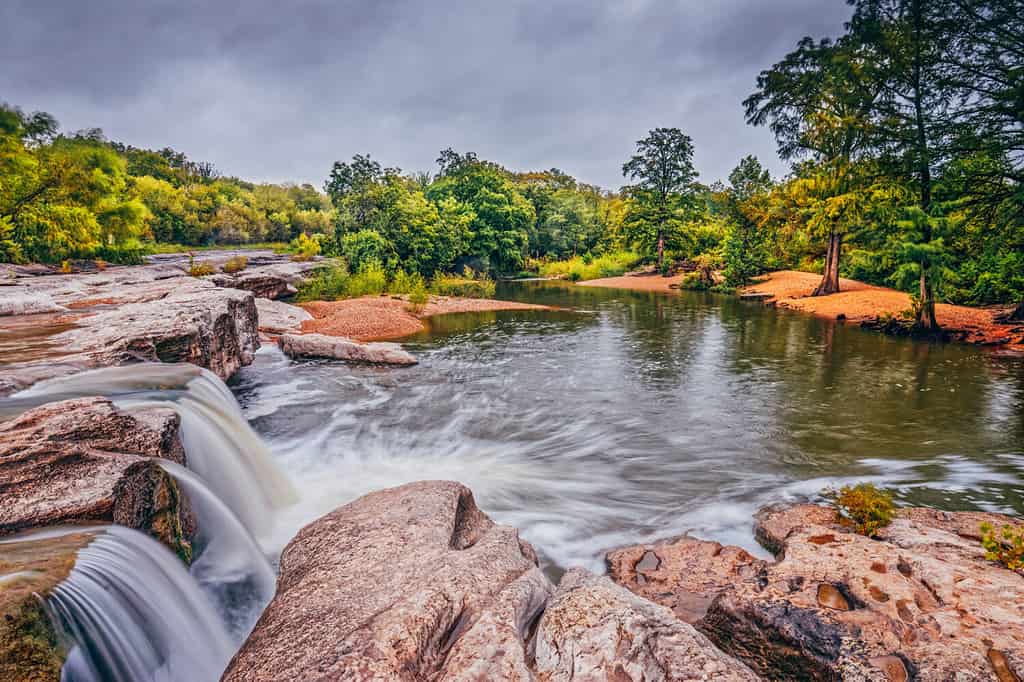
©Silvio Ligutti/Shutterstock.com
If dinosaur tracks and calm rivers don’t attract your attention, maybe a state park with waterfalls will! The next state park on our list to view fall foliage is McKinney Falls State Park in Austin, Texas. This gorgeous state park has a surface area of 744.4 acres. The park was established and opened to the public in 1976, although its history dates back to 1716, long before the United States became a country.
Although the history of this park is interesting, it’s not as eye-catching as its beauty. McKinney Falls State Park has refreshing and peaceful upper and lower falls along Onion Creek. The park also features at least 13 miles of hiking trails and the remains of an old Texas homestead. Cycling is also allowed on some hiking trails and there are 81 campsites. If you want to stay overnight, but don’t want to hitch a tent, you can also rent a remodeled cabin. Imagine catching bright red falling leaves, while also listening to the sound of rushing water!
6. Tyler State Park
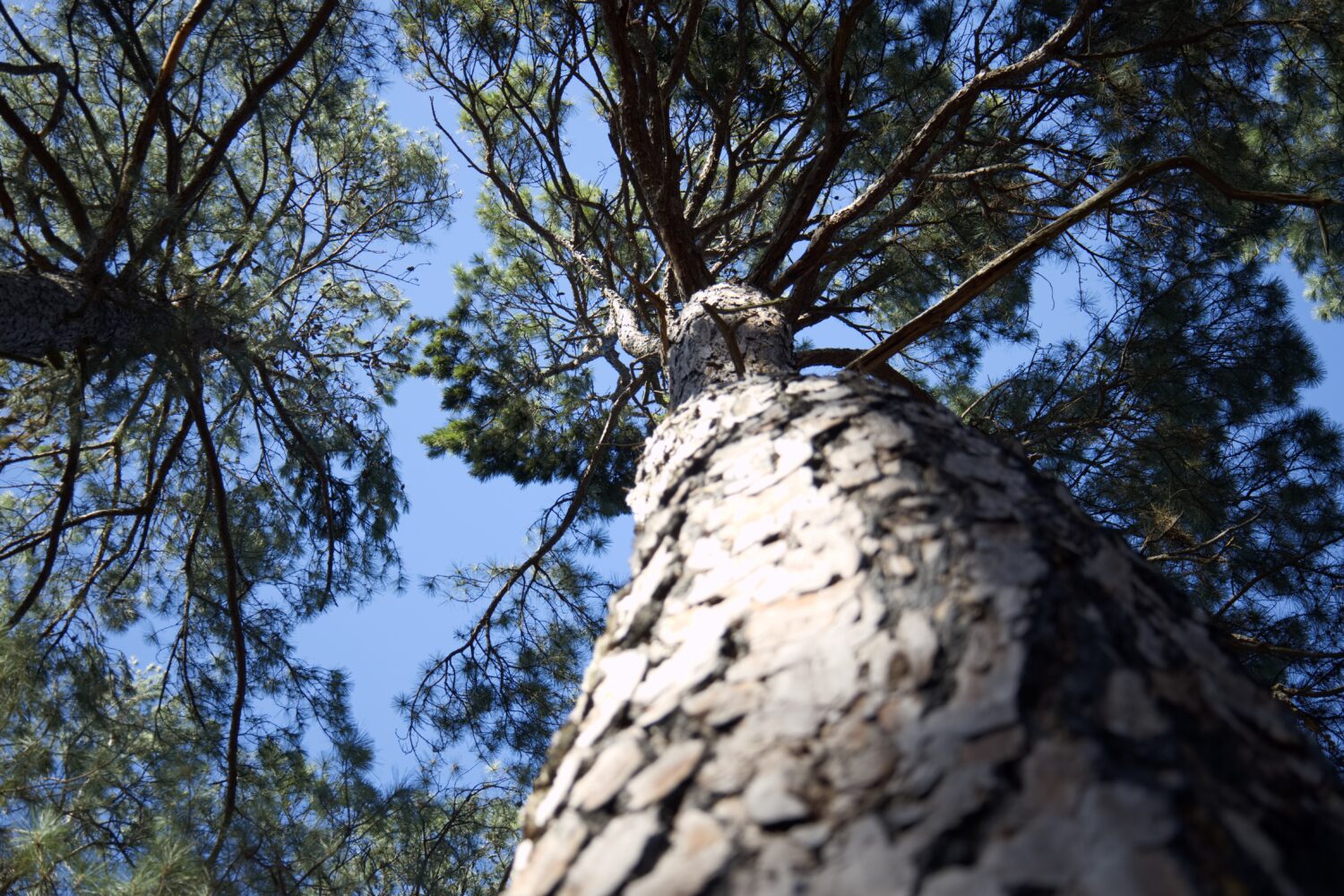
©AshuChida/Shutterstock.com
Tyler State Park is another excellent state park to visit when leaves change color in Texas. It’s a 985.5-acre state park just north of Tyler, Texas. The main attraction of this picturesque state park is the 64-acre lake. The park was established and opened in 1934, making it one of the oldest state parks in Texas. With how lush and green the state park is, you can only imagine how colorful it becomes during fall. You can admire the 100-foot-tall trees while hiking, camping, swimming, fishing, or bird-watching.
Tyler State Park has at least 13 miles of trails. One of the more popular hiking trails is the Whispering Pines Nature Trail, which is labeled as an easy to relatively challenging 0.75 loop. While hiking this short trail, you may encounter red-bellied woodpeckers and gray squirrels. Some plants within this state park are eastern red cedars, blackjack oaks, and mockernut hickory.
7. Guadalupe Mountains National Park
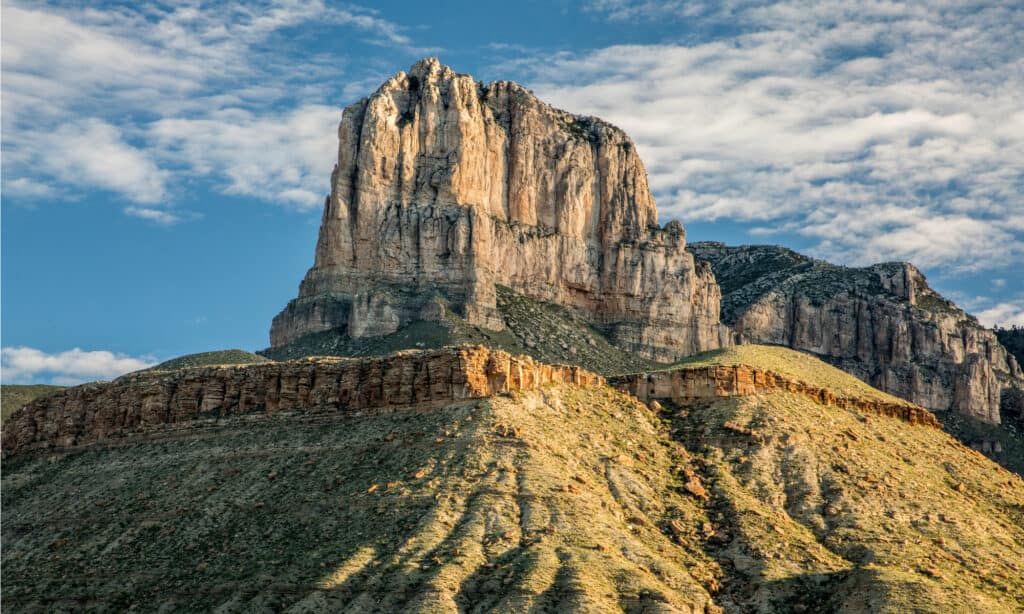
©ShuPhoto/Shutterstock.com
Texas is lucky and has two national parks, including one that’s on this list. The Guadalupe Mountains National Park is in Western Texas. Although this gorgeous national park is known for a lot of things, it also experiences excellent and vibrant fall foliage. You can hike to see fall colors. These bright colors aren’t common in the southwest, but the conditions are just right in the Guadalupe Mountains National Park, where many leaves change color from mid-October to mid-November.
The best time to enjoy this national park and all of its fall color glory is during a weekday within the last week of October and the second week of November. During weekends, the park can get very full! An excellent trail that takes you deep into the lovely fall colors is the McKittrick Canyon Trail.









